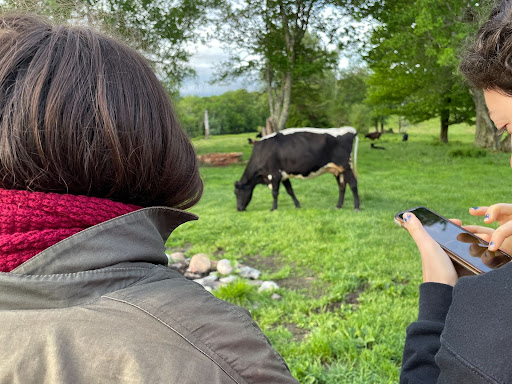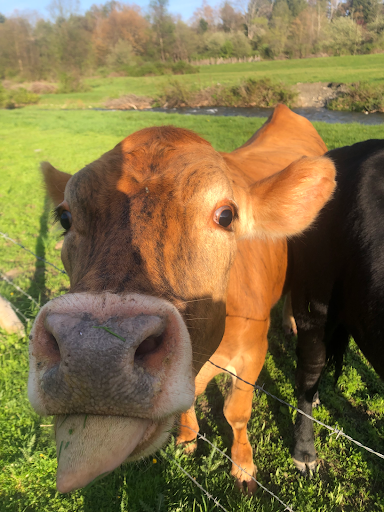Moo-ved for the winter: Uncovering the mystery of the Stone Hill cows
February 22, 2023

For the majority of the year, a herd of roughly 20 cows grazes the fields behind the Clark Art Institute at Stone Hill. These cows, who spend the warmer months roaming the meadow, are well known throughout the Williamstown community.
“The whole town gets to use them — the College, the Clark, everybody,” Rich Haley Jr., the Williamstown farmer who owns the famed cattle, told the Record in an interview. It’s true: Images of the cows adorn advertisements for the art museum, and generations of students at the College have made the 15-minute trek off campus to Stone Hill to take photos with their unofficial mascots.
“Cows go back to the late 1800s on that piece of land,” Haley said. His great-grandfather — and then his grandfather, father, and uncle — sold the milk that the cows produced, he said. In the 1980s, the farm shut down, but Haley continued to raise the cows to sell to local dairy farmers.
That business model, however, is no longer profitable, according to Haley. Cows that sold for roughly $1800 thirty years ago can go for $600 now. “To sell a cow now, you get absolutely nothing for the work you put into it,” he said. “The cows are more like a hobby.”
The cows are fairly domesticated and friendly. “These cows are all tame,” Haley said. “You can go and pet them.” They don’t, however, have individual names.
But the cows don’t stay at Stone Hill year-round. In the winter, they are moved to a barn on Haley Farm, which the Haley family has owned since around the 1950s and is at the base of the Hopper Trail. The barn, which was built in 1997, keeps the cows warm throughout even the harshest winter conditions. When temperatures dropped to record lows earlier this year, the cows stayed toasty, Haley said.

Starting at the end of each April, the cows roam around a fenced area in the fields behind the Clark — but that doesn’t mean that Haley is off-duty. “Every time someone leaves the gate open at the Clark, they call me to come get them,” he said. “It could be any time of the day or the night.”
Haley’s cows have also been a symbol of College and Town pride for decades. “I would put a purple blanket on them, and they’d be down there at graduation,” he said of one instance in the 1980s. “I used to bring them over by the [First Congregational Church] and just hang out for the day. People would take pictures with them.”
Despite the cows’ popularity, however, Haley said that he has no official partnership with the Clark, the College, or the Town, and the money spent to raise and maintain his cows comes directly from his pocket. “It ends up costing me more money than it’s really worth,” he said. “It’s hard to keep doing what I’m doing.” Other than Haley, there may not be anyone else willing to take care of the cows, especially because there is no compensation for doing so, he said.
Haley said that he’s currently exploring ways to receive some sort of payment for the attraction that his cows have become but has been unsuccessful thus far. “It’s not like I’m begging for money,” Haley said. “The whole town uses this little farm.”
“Why couldn’t some kind of fund be set up to keep the cows?” he asked. “For me to survive with what we’re doing, we’re going to [need] an income.”








